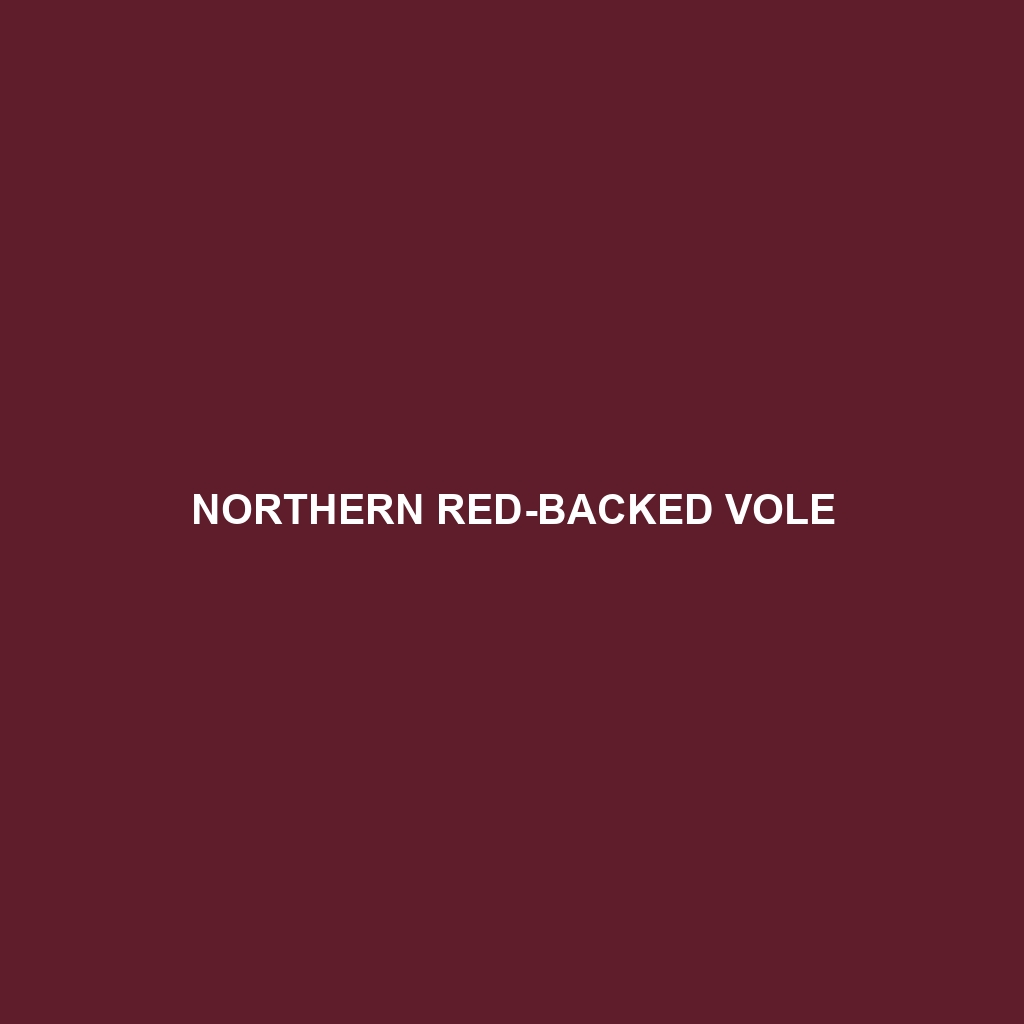Species Description: Northern Red-backed Vole
Common Name: Northern Red-backed Vole
Scientific Name: Myodes gapperi
Habitat: The Northern Red-backed Vole primarily inhabits the dense forests of North America, particularly in regions of Canada and parts of the northern United States. These voles thrive in moist environments such as woodlands, areas rich in undergrowth, and along the edges of swamps and bogs where ground cover is plentiful. Their preferred habitats often include soft, loamy soil that is conducive for burrowing and abundant vegetation to provide cover from predators.
Physical Characteristics: The Northern Red-backed Vole is a small rodent, typically measuring around 9 to 11 inches in length, including its tail. Its most distinctive feature is its reddish-brown fur on its back, which contrasts sharply with its lighter grayish belly. The voles exhibit a rounded body shape, short ears, and a relatively short tail, which is covered in fur. Their small size and coloration help them effectively camouflage within their forest habitats, protecting them from predatory threats.
Behavior: Northern Red-backed Voles are mostly crepuscular, meaning they are most active during the twilight hours of dawn and dusk. They exhibit fascinating social behavior and are known to create intricate tunnel systems underground, which can span large areas. These voles are generally solitary but may share shelters during colder months. They are proficient climbers and often forage for food in low shrubbery, exhibiting behaviors like caching food for future consumption.
Diet: The diet of the Northern Red-backed Vole consists mainly of a herbivorous diet, including seeds, fruits, nuts, and various green plants. They particularly enjoy the bark and roots of certain trees, making them important seed dispersers within forest ecosystems. Their feeding habits not only sustain their population but also contribute to the vegetative diversity of their habitats.
Reproduction: Northern Red-backed Voles typically breed from late spring to early autumn, with peak activity occurring during the warmer months. The gestation period lasts about 18 days, and females often give birth to a litter of 3 to 6 young. The young voles are born blind and fur-less, relying heavily on their mother’s care until they are weaned around 3 weeks. It is notable that these voles can breed multiple times within a year, contributing to population stability.
Conservation Status: Currently, the Northern Red-backed Vole is classified as Least Concern by the International Union for Conservation of Nature (IUCN). Despite threats from habitat loss due to deforestation and climate change, they maintain stable populations in their preferred habitats. Conservation efforts focus on protecting forested areas to ensure their continued survival.
Interesting Facts: The Northern Red-backed Vole has an exceptional ability to adapt to varying forest conditions and can live in diverse habitats, making it a resilient species. Interestingly, they are known to communicate with each other using a series of vocalizations and scent markings to establish territory.
Role in Ecosystem: The Northern Red-backed Vole plays a crucial role in its ecosystem as both a herbivore and as prey for larger carnivores, such as owls and foxes. By consuming a variety of plants and dispersing seeds through their foraging habits, these voles support forest regeneration and contribute to the overall health of their environments.
